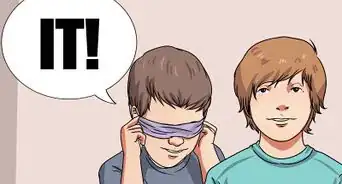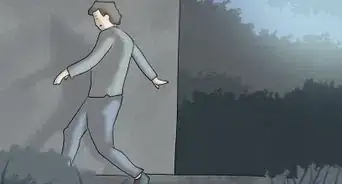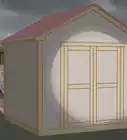This article was co-authored by wikiHow staff writer, Janice Tieperman. Janice is a professional and creative writer who has worked at wikiHow since 2019. With both a B.A. and M.A. in English from East Stroudsburg University, she has a passion for writing a wide variety of content for anyone and everyone. In her free time, you can find her working on a new crochet pattern, listening to true crime podcasts, or tackling a new creative writing project.
wikiHow marks an article as reader-approved once it receives enough positive feedback. In this case, 81% of readers who voted found the article helpful, earning it our reader-approved status.
This article has been viewed 234,529 times.
Learn more...
Hide and seek is a timeless and thrilling game that can be enjoyed by people of all ages. While the game itself isn’t difficult to play, it’s hard to be successful when you’re trying to find a lot of people quickly or attempting to hide for a long period of time. By taking a moment to understand the basic rules and regulations of the game, you’ll be ready to take advantage of any possible loophole. Finally, add a little more focus, determination, and creativity into your hide and seek gameplay so you can be victorious no matter which role you play!
Steps
Choosing Good Hiding Places
-
1Search for items with long edges that you can hide behind. Look for large pieces of furniture or house fixtures that are wide and long, and are difficult to peer around. If the seeker doesn’t feel like doing a thorough job in a certain room, you might be able to get away with an unexpectedly clever hiding spot.
- For example, if there’s a room that’s divided by a sudden closet or angular wall, try hiding against the side of this surface. If the seeker doesn’t peer all the way around the corner, they might not notice you.
-
2Take advantage of long curtains when you’re playing inside. While thinner, more sheer curtains aren’t the best hiding spot, thick, neutral-toned drapes can provide an excellent place for you to hide on short notice. Take advantage of the ruffles in the drapes as you position yourself behind them, and stand as still as possible![1]
- This works best with floor-length drapes, so your feet aren’t noticeably sticking out on the bottom.
- Don’t pick this type of hiding spot unless you’re comfortable with standing for a long period of time.
Advertisement -
3Tuck yourself into a clothes hamper to hide in plain sight. As the seeker is counting, find a laundry basket that you can squeeze or crouch into. Don’t worry if there’s clothing in the hamper; if anything, this makes your hiding spot more convincing! Take out the clothing and get into the bottom of the basket, then cover yourself with clothing![2]
- Make sure that you have enough room to breathe when you’re doing this.
-
4Look for shrubbery or tall grass that you can blend in with. Search for spots in a yard or park that appear especially inconspicuous to the naked eye. Squat, kneel, or lay down beneath a bush or some tall grass so that you can blend in better. If you really want to pull off this hiding spot, try wearing darker clothes![3]
- Be sure to wear clothes that you don’t mind getting dirty or dusty.
-
5Search for unlikely spots to hide in a yard, like a ditch. Look along the edge of your game’s boundaries, like the property line of a yard or the edge of a lawn. Even if it takes you a little bit longer, try to go to these outer areas and make yourself as flat and 2-dimensional as possible. While this might be a little risky, there’s a chance that the seeker won’t notice you if you’re hiding in plain sight.[4]
- To make the hiding spot more convincing, wear neutral-toned or darker clothes when you’re playing the game.
Tip: Prepare yourself for ticks whenever you play outside. Whenever possible, spray yourself with an insect repellent and wear clothing that contains permethrin. Also, check any exposed skin once you’re finished playing an outdoor game.
Improving Your Hiding Strategies
-
1Determine how long the seeker is allowed to count for at the beginning of the round. Clarify how long the hiders will have to find a hiding spot before the seeker stops counting. Many games employ a rule of 50 seconds, while other people have opted for a shorter time span. Keep this amount of time in mind so you can plan for the perfect hiding spot.[5]
- While it’s fun to be ambitious, don’t go for an impossible-to-reach hiding location. The longer it takes you to hide, the greater the chances are that the seeker will find you early on.
-
2Pick a hiding place after the seeker looks in a room. When the seeker starts counting, don’t pick a hiding place right away. Instead, hover in a far away corner and wait for the seeker to check a certain room. Since there’s a good chance that they won’t check the room for a while, hide in that spot after the seeker leaves.
- Check and make sure that you’re allowed to do this before the game starts. Some groups might have stricter rules than others!
-
3Look for areas that provide a lot of camouflage. Try to avoid areas that are painted or filled with furniture that’s a solid color. Unless you’re playing in the dark, you won’t be able to blend in very well to a couch or curtain that’s bright red. Instead, look for multi-colored areas where you can try and blend into the background.
- Try and use decoys whenever possible. If there’s a bedroom or couch in your hiding area, stuff a few pillows under a blanket and lay it on the surface. The seeker might get distracted and check under the blanket, which will buy you more time.
-
4Inhale in slow breaths so you’re not overheard. Don’t give yourself away by breathing heavily. As tempting and clever as it might originally seem to hold your breath, you might find yourself in trouble once your lungs need more air. Instead, imitate military breathing exercises and take low, slow breaths. If you’re quiet, the seeker won’t be able to detect you by sound![6]
- Practice this type of breathing throughout the day, even when you’re not playing the game. This will help you gain expertise for future rounds of hide and seek!
Tip: While you’re taking low, slow breaths, avoid shifting your body. Even if it’s a small movement, the seeker might be alerted to your presence by a stray twitch or shake.
-
5Don’t hide in any dangerous areas during the game. Avoid the temptation to hide on an especially high ledge, or to sneak into a clothes dryer. As creative as these ideas are, there’s a big risk for injury and worse if you try and fit yourself in an unstable area. Before the round starts, clarify with the other players if there are any spots that are off-limits.[7]
- If you aren’t sure if you’re allowed to hide in a certain area, then don’t hide there at all. You can’t master the game if you end up breaking the rules!
Developing Better Seeking Skills
-
1Keep track of the places you’ve already searched. Take a mental note of the rooms and areas that you’ve looked through. Once you’ve examined a room thoroughly and found no people hiding inside, mark that room off as searched. Depending on your play style, continue searching in a grid-style pattern or by randomly checking rooms to keep other players on their toes. Whatever you do, remember where you have and haven’t been.
- Keep in mind that hiders might sneak into rooms that you’ve already searched. Hiders may tuck away into a bathroom or corner then hide in a room you've already searched. Once you’ve searched all main areas, double back to find any stragglers in the previously checked rooms.
-
2Check behind objects with wide angles to be thorough. Look for less obvious hiding spots or inanimate objects that are just wide enough for people to fit behind. Try putting yourself in the shoes of the people who are hiding, as this might help you gain some perspective and out-of-the-box ideas on where to search.
- Be on the lookout for walls that cut through the center of a room, in addition to certain items of furniture, like desks and long sofas.
-
3Think outside of the box whenever you play as the seeker. Use your knowledge of your friend’s tendencies and preferences to try and find them earlier on in the game. Try and put yourself in your friend’s position. If you were this person, where would you be most likely to hide? Take advantage of these theoretical questions as you search throughout the hiding area.
-
4Search lower areas to see if anyone is crouching to hide. Look under beds, tables, and any other surface that can fit a person beneath it. Although many people hide in perfectly normal and average spots, other people might hide by squatting in a closet, or by planking beneath a table. Keep this in mind, especially when you’re playing with smaller/younger individuals.
- If you want to make the game harder for seekers, then make spaces like closets and pantries off-limits.
-
5Memorize your playing area for the round. Have a good sense of your bearings throughout the game. To save time while you’re playing as seeker, take a moment to commit the basic floor plan of your playing area to memory. Whether you’re playing outdoors or indoors, keep in mind the widest, most open spaces as well as the smaller, more compact places where players are most likely to hide.
- For instance, it’s much less likely that players will hide in the large, open areas of your play area. Because of this, you might have more success searching in narrow corridors and other less obvious places.
Community Q&A
Did you know you can get answers researched by wikiHow Staff?
Unlock staff-researched answers by supporting wikiHow
-
QuestionHow do you play sardines?
 wikiHow Staff EditorThis answer was written by one of our trained team of researchers who validated it for accuracy and comprehensiveness.
wikiHow Staff EditorThis answer was written by one of our trained team of researchers who validated it for accuracy and comprehensiveness.
Staff Answer wikiHow Staff EditorStaff Answer
wikiHow Staff EditorStaff Answer -
QuestionWhat do you yell during hide and seek?
 wikiHow Staff EditorThis answer was written by one of our trained team of researchers who validated it for accuracy and comprehensiveness.
wikiHow Staff EditorThis answer was written by one of our trained team of researchers who validated it for accuracy and comprehensiveness.
Staff Answer wikiHow Staff EditorStaff Answer
wikiHow Staff EditorStaff Answer -
QuestionCan you move during a game of hide and seek?
 wikiHow Staff EditorThis answer was written by one of our trained team of researchers who validated it for accuracy and comprehensiveness.
wikiHow Staff EditorThis answer was written by one of our trained team of researchers who validated it for accuracy and comprehensiveness.
Staff Answer wikiHow Staff EditorStaff Answer
wikiHow Staff EditorStaff Answer
References
- ↑ https://www.familyhandyman.com/smart-homeowner/the-ultimate-guide-for-secret-hiding-places-in-your-home/
- ↑ https://livesafely.org/60-places-hide-valuables-home/
- ↑ https://m.youtube.com/watch?v=M6LmQIYjDio&t=104s&t=1m13
- ↑ https://m.youtube.com/watch?v=M6LmQIYjDio&t=104s&t=0m53s
- ↑ https://www.teachkidshow.com/teach-your-child-to-play-hide-and-seek/
- ↑ https://www.military.com/military-fitness/health/the-importance-of-breathing
- ↑ https://www.teachkidshow.com/teach-your-child-to-play-hide-and-seek/
- ↑ https://www.teachkidshow.com/teach-your-child-to-play-hide-and-seek/
About This Article
To be a master at hide and seek, work on creative hiding strategies that give you an advantage. For example, hover in a nearby corner as the seeker counts and hide in that very same room once the seeker leaves it. They probably won't come back to check that area for a while! It also helps to hide in multi-colored areas that offer a little camouflage, since you are more likely to stand out if everything around you is a single color. For example, you'll be easy to spot if you hide behind a bright red couch. Hiding in plain sight is another good trick. For instance, empty the dirty clothes from a laundry basket, get into the basket, and put the clothes on top of you to cover your body. For more tips on being a master at hide and seek, like how to be a better seeker, read on!

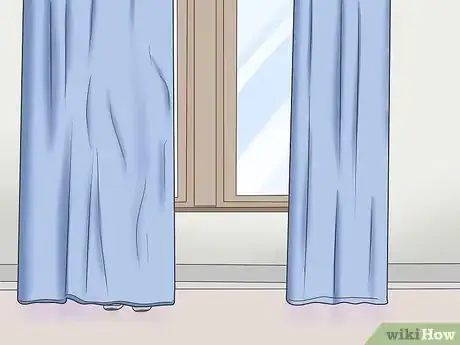
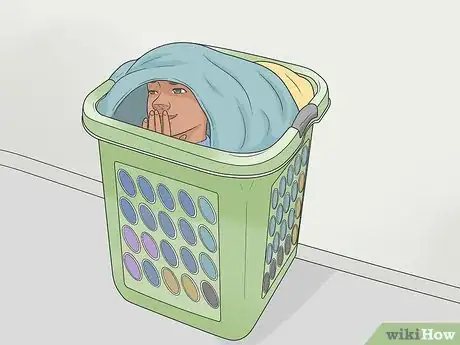

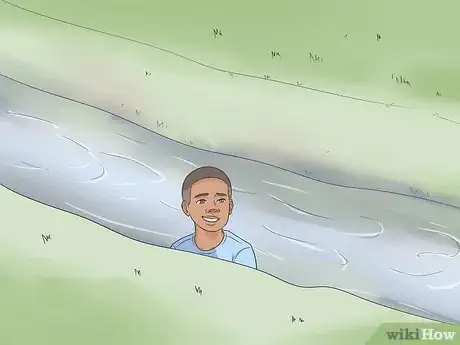
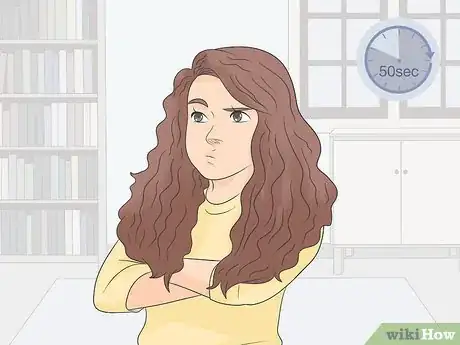


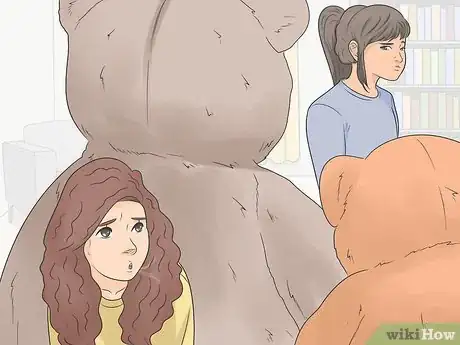
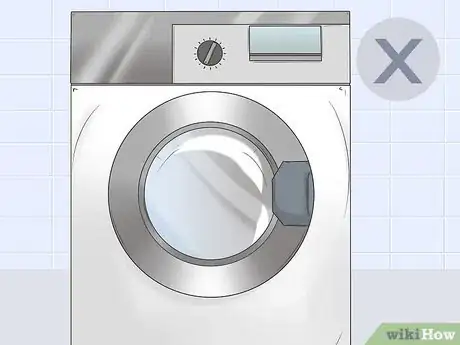
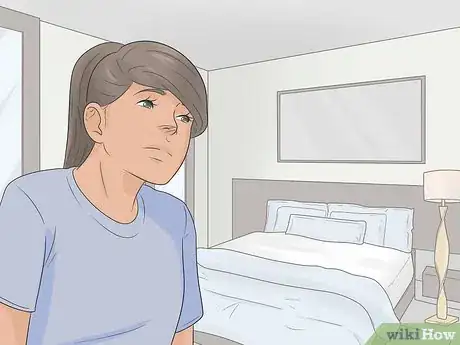
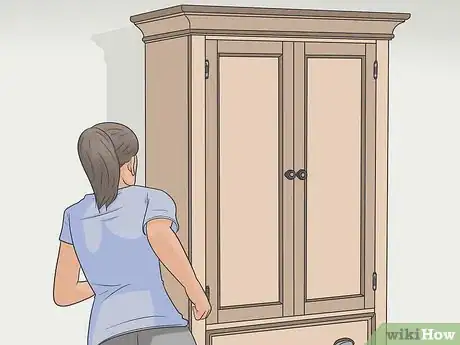
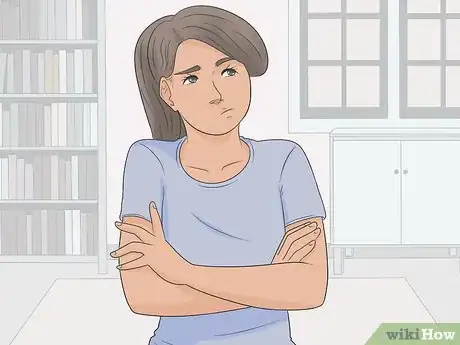
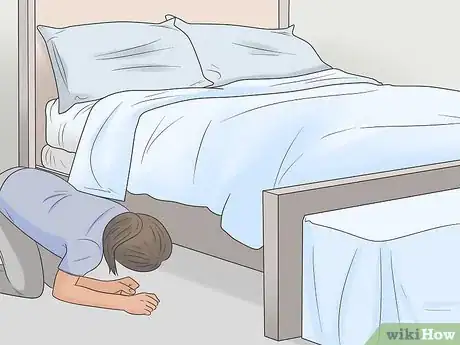
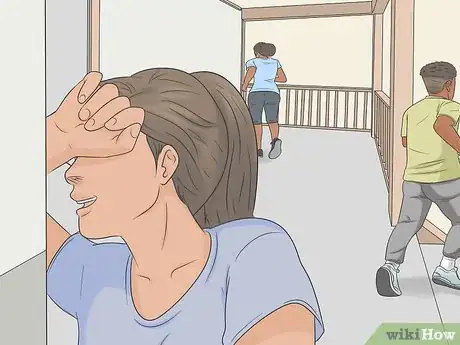








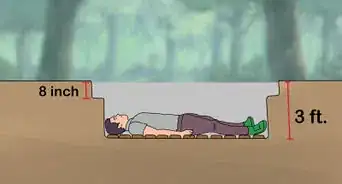
-Step-12.webp)

